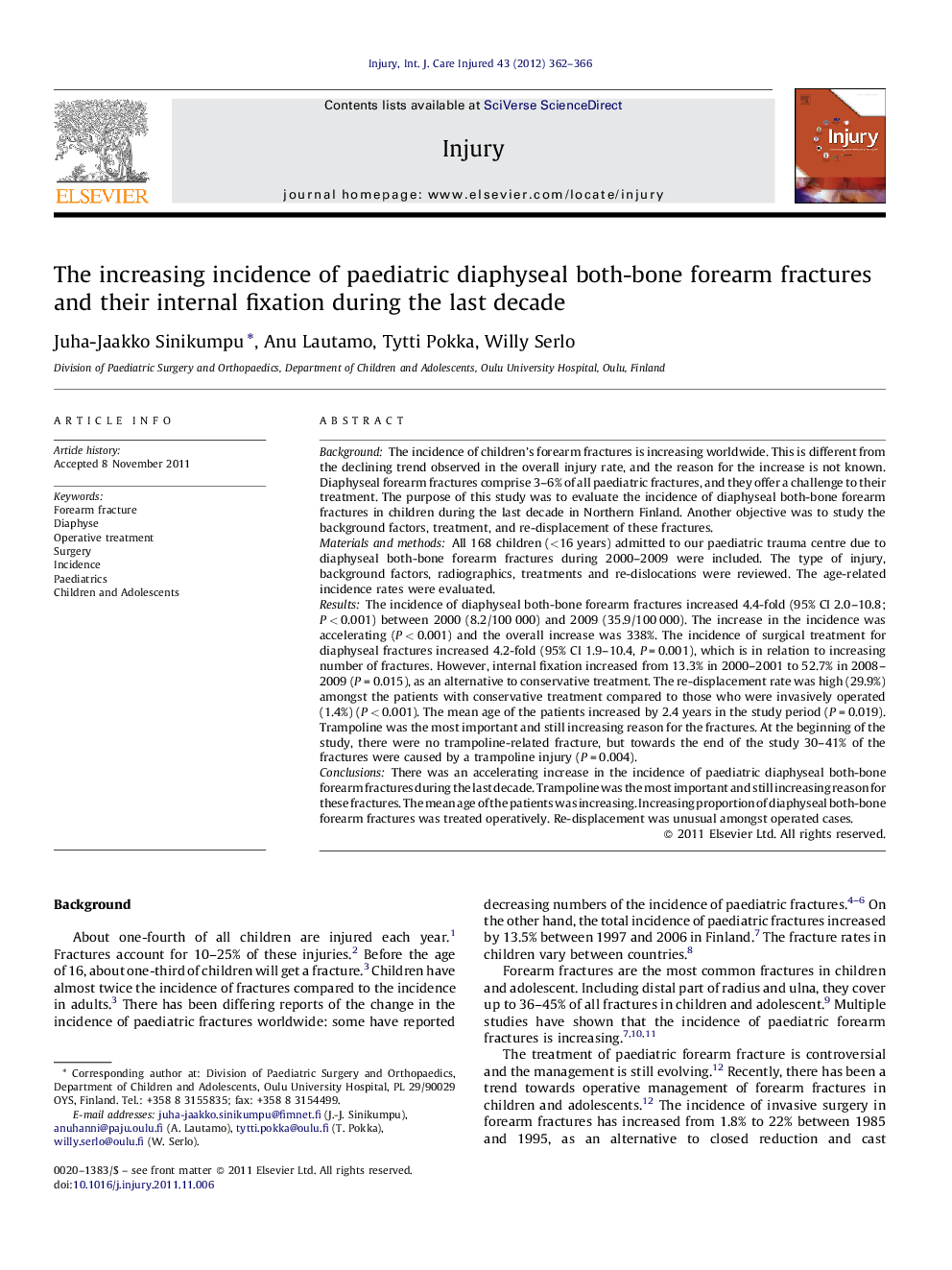| Article ID | Journal | Published Year | Pages | File Type |
|---|---|---|---|---|
| 3240762 | Injury | 2012 | 5 Pages |
BackgroundThe incidence of children's forearm fractures is increasing worldwide. This is different from the declining trend observed in the overall injury rate, and the reason for the increase is not known. Diaphyseal forearm fractures comprise 3–6% of all paediatric fractures, and they offer a challenge to their treatment. The purpose of this study was to evaluate the incidence of diaphyseal both-bone forearm fractures in children during the last decade in Northern Finland. Another objective was to study the background factors, treatment, and re-displacement of these fractures.Materials and methodsAll 168 children (<16 years) admitted to our paediatric trauma centre due to diaphyseal both-bone forearm fractures during 2000–2009 were included. The type of injury, background factors, radiographics, treatments and re-dislocations were reviewed. The age-related incidence rates were evaluated.ResultsThe incidence of diaphyseal both-bone forearm fractures increased 4.4-fold (95% CI 2.0–10.8; P < 0.001) between 2000 (8.2/100 000) and 2009 (35.9/100 000). The increase in the incidence was accelerating (P < 0.001) and the overall increase was 338%. The incidence of surgical treatment for diaphyseal fractures increased 4.2-fold (95% CI 1.9–10.4, P = 0.001), which is in relation to increasing number of fractures. However, internal fixation increased from 13.3% in 2000–2001 to 52.7% in 2008–2009 (P = 0.015), as an alternative to conservative treatment. The re-displacement rate was high (29.9%) amongst the patients with conservative treatment compared to those who were invasively operated (1.4%) (P < 0.001). The mean age of the patients increased by 2.4 years in the study period (P = 0.019). Trampoline was the most important and still increasing reason for the fractures. At the beginning of the study, there were no trampoline-related fracture, but towards the end of the study 30–41% of the fractures were caused by a trampoline injury (P = 0.004).ConclusionsThere was an accelerating increase in the incidence of paediatric diaphyseal both-bone forearm fractures during the last decade. Trampoline was the most important and still increasing reason for these fractures. The mean age of the patients was increasing. Increasing proportion of diaphyseal both-bone forearm fractures was treated operatively. Re-displacement was unusual amongst operated cases.
